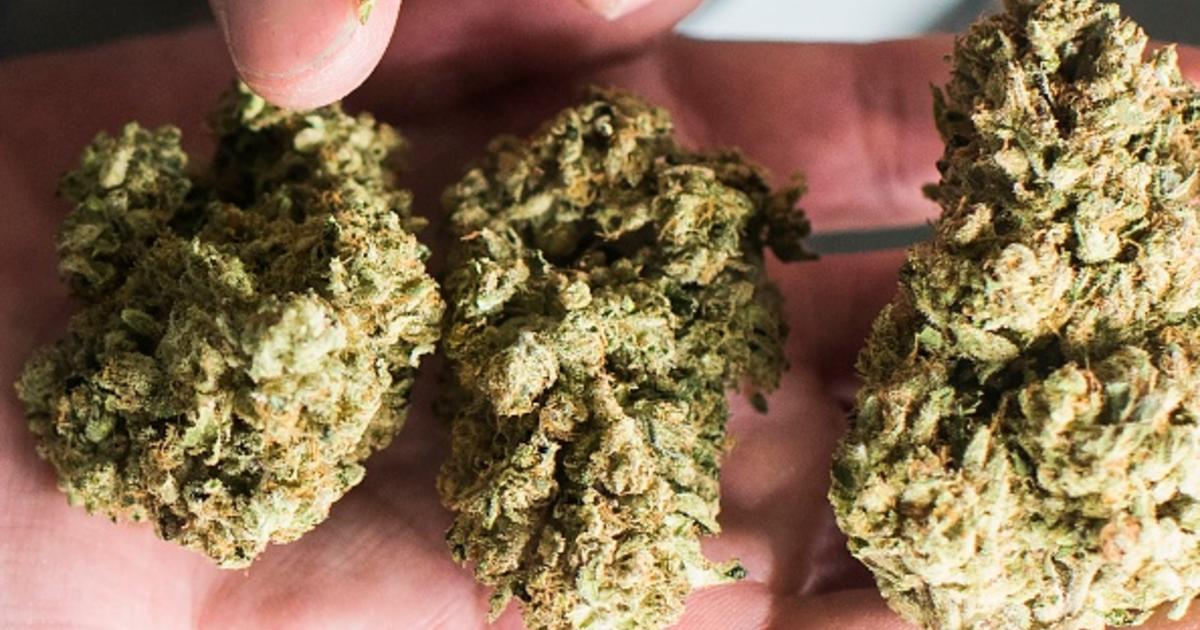Invasive Species Threatening S. Fla. Wildlife, Economy
MIAMI (CBS4) - Florida has the worst problem in the world when it comes to non-native amphibians and reptiles.
"This should concern everyone on the planet," said Joe Wasilewski, a local biologist. As he explained to CBS4's Special Contributor Ron Magill of Zoo Miami, "The truth is they're here."
The Burmese Python has become the poster child for invasive species in South Florida. And though it receives the overwhelming majority of attention when it comes to non-native species taking up residence in our local communities, it is just the tip of the iceberg.
"Exotic wildlife doesn't have enemies. They reproduce at an alarming rate. They could go off the charts and that's exactly what's happening here in South Florida," Wasilewski told Magill.
Wasilewski has been working with wildlife in South Florida for more than 40-years.
"If you would've asked me that seven years ago that I could go out and catch Pythons and iguanas, I would say you are crazy," exclaimed the Biologist.
Florida Fish and Wildlife Commission has tracked more than 400 non-native species of fish and wildlife plus more than one-thousand exotic plants around the state.
So how did these invaders get here? In most cases these exotic animals either escaped or were released by their pet owners.
Florida has sub-tropical climate that is very conducive for many different wildlife for many different wildlife to live in the wild or in your local park or backyard.
The Cuban Toad Frog, also referred to as the Marine Toad... the Cane Toad can grow to the size of a small dinner plate. Initially introduced from Central and South America in the 50's, it becomes the dominant amphibian in whatever habitat it occurs, forcing out native toads.
In addition, it presents a potentially fatal threat to pet dogs that instinctively bite it as it is hoping around the yard. When bitten, the toad excretes a toxic substance from two glands located behind its head. Once it gets into the dogs mouth, if left untreated, it can be deadly.
Other threats include exotic lizards like Nile Monitors, Tokay Gekos, Green Iguanas, black and white Tegus and Spiny-tailed lizards... compared to our native lizards... they are larger, stronger and more aggressive.
In the water, the American Crocodile is native to Florida but what worries the experts is this Nile Crocodile. This baby Nile was caught in Homestead.
"Multitudes of Nile Crocodiles can certainly impact their whole population, in fact, we do know that they could hybridise, which would be a scary thing. The Nile Crocodile in its native continent of Africa are man-eaters. Let's face it. It could happen.
Most exotic animals simply don't make good pets and many times people don't realize that until it's too late
We were there as Fish and Wildlife officials tracked down this Pouched Rat from Gambia. It looks like a rat on steroids. This is a smaller one but this rat can grow up to 3-feet long and weigh almost nine pounds. It was originally introduced to the Florida Keys around the year 2000, when it's believed a local breeder released several into the environment. The Gambian Pouched Rat is a serious threat to our local farmers.
"If they were to make it to the mainland around Homestead, Redlands area where we have a lot of agriculture, they could pose a big threat to those industries," explained Jenny Eckles of the Florida Fish and Wildlife Commission.
Next stop for these rats... they will be euthanized.
Exotic birds are also making a very expensive mark all around us... all you have to do is look up.
At power lines Monk Parakeets like to build these nests, their large communal nests around utility lines and transformers. Those nests will frequently cause damage to that equipment. In some cases they've led to fires and power outages.
Mike Spoor is Vice-President of Florida Power & Light. He told Magill, this is a problem engineers have been battling for the last ten years. "These Monk Parakeets alone have created 2.3 million minutes of interruption time for our customers."
Although these invaders present the threat of disease and environmental damage. There is also a huge price to pay. The U.S. spends $130-billion dollars a year trying to control exotic animals and South Florida is front and center in that fight.



